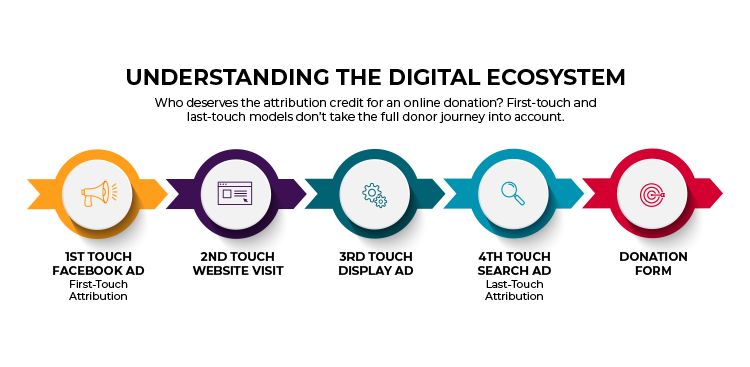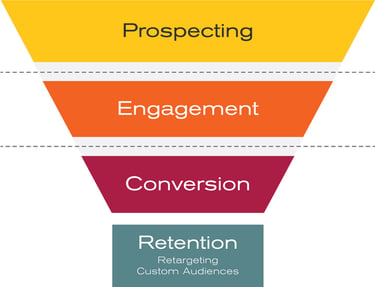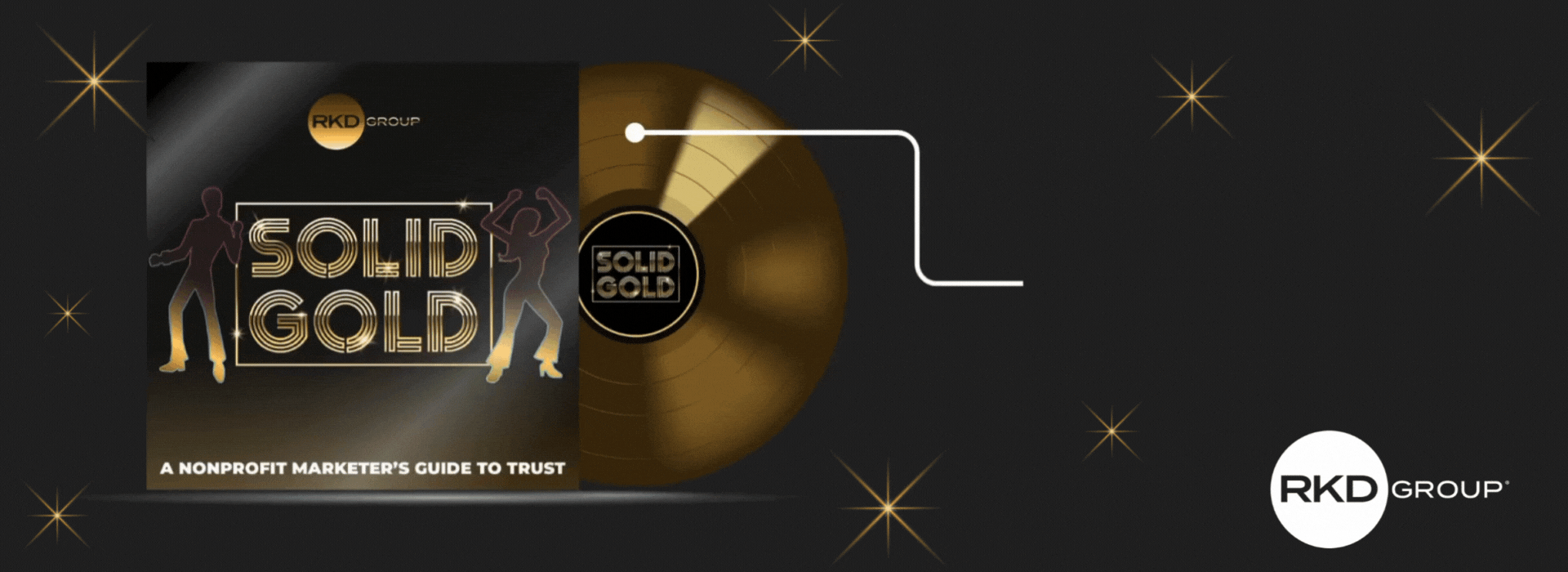 We live in a connected, data-driven world, and we use that wealth of data to empower better decision-making. That in itself explains why leaders and board members at nonprofit organizations can fail to see the value of digital media in fundraising.
We live in a connected, data-driven world, and we use that wealth of data to empower better decision-making. That in itself explains why leaders and board members at nonprofit organizations can fail to see the value of digital media in fundraising.
On the surface, the data can show a poor ROI and surging costs per donation in recent years. But understanding how that data is calculated—and the privacy changes that drive this calculation—can make a world of difference.
You may be left wondering, “Is digital media still worth the investment?” Here's why the answer is a resounding “Yes!”
The changing landscape of digital attribution
One of the most challenging parts of measuring performance in digital media is the data available. Determining how ad campaigns impact donations can be tricky these days due to privacy changes and the overall complexity of a donor’s journey in today’s omnichannel landscape.
Facebook advertising is an excellent example of this challenge.
In 2020, Apple’s release of iOS 14 brought significant privacy changes by requiring apps to explicitly ask users for permission to track their online activities across other apps and websites. Many iPhone and iPad users could now easily opt out of tracking—and 96% of iPhone users quickly did so.
This change created a big gap between the
perceived effectiveness and the actual effectiveness of Facebook advertising.
For Facebook advertisers, this had direct implications on attribution.
Before the update, advertisers could trace a Facebook user's interactions over a 28-day period after an ad impression. Post-iOS 14, this "lookback" window was significantly reduced to just 7 days for click-throughs and 1 day for view-throughs.
This reduced visibility meant advertisers lost insight into the longer-term effects of their ads. Many donors who might interact with an ad and convert later—for example, 10 days after seeing the ad—became invisible in the tracking.
This change created a big gap between the perceived effectiveness and the actual effectiveness of Facebook advertising.
That leads us to this simple question:
How can nonprofits measure digital media success?
The short answer is that it’s complicated. The longer answer is that we must take a variety of metrics into account to gain a more holistic view of digital engagement.
As we’ve noted before, digital media has never been a 1-to-1 conversion. Despite what many people believe, we’ve never been able to say, “This specific person clicked on this ad at this time and made this donation.”
An essential concept to understand is that in the digital landscape—especially with nonprofit fundraising—it typically takes multiple touchpoints and ad exposures before a donor acts. No one digital channel works in isolation.
If a user sees an ad on Facebook, for example, then later searches for the nonprofit and donates, who gets the “credit”? There are multiple attribution models that determine which channel/touchpoint receives credit for a conversion:
- First-touch attribution gives credit to the first channel/touchpoint that started the journey.
- Last-touch attribution gives credit to the last channel/touchpoint prior to the conversion.
- Multi-touch attribution assigns equal credit to each channel/touchpoint in a donor’s journey to convert. This can also be referred to as linear attribution.

Last-touch attribution is the most common for standard reporting, but it doesn’t tell the full story of how different media channels play a role in the process.
In the example above, paid search would get credit for the donation in a last-touch model. Although the journey began on Facebook, the channel would not receive credit for the conversion with this attribution.
This could lead to the conclusion that Facebook was not effective in driving donations. However, cutting out Facebook would result in losing initial touchpoints with a donor prospect.
We should never give all the credit for a donation solely to the first touchpoint or to the last touchpoint that a donor sees. All of those touchpoints created the complete journey that led to a charitable gift.
Understanding the digital media KPIs that matter
Now that you understand the complexities of the digital ecosystem and the challenges of accurate attribution, let’s talk about the key performance indicators (KPIs) that matter.
Performance should be measured by assigning KPIs at the channel level, based on where each channel fits within the media funnel.
For the prospecting and engagement stages, this means looking at:
 Impression count
Impression count- Clickthrough rate
- Cost per engagement
- Video completion rate
Conversion, however, should focus on driving users to take action toward your campaign ask and the cost associated with these actions:
- Donation
- Cost per donation
Retention then becomes a balance of maintaining engagement and offering future opportunities for conversion when the time is right.
Going back to our example earlier, lead generation (collecting email addresses) works effectively in a Facebook environment at the top of the funnel. Therefore, we would measure success in Facebook ads based on impressions and clickthrough rate in addition to the number of email addresses acquired.
It’s also important to note that there are two different ways to quantify a conversion. Tracking both types gives a more in-depth view into the value of paid media:
- View-through conversions: The user is served an ad, doesn’t click and converts later on your website
- Click-through conversions: The user is served an ad, clicks and converts in the same session
When you take these KPIs together, you get a holistic view of how each digital media channel contributes to the success of your campaigns.
The limitations in digital media attribution might seem challenging, but they shouldn't deter nonprofits from leveraging the vast potential of digital ads. With a more holistic approach to measurement, a better understanding of the donor journey and a shift in mindset toward valuing engagement as much as conversions, you can make digital media a potent tool for your fundraising growth.






Leave a comment: